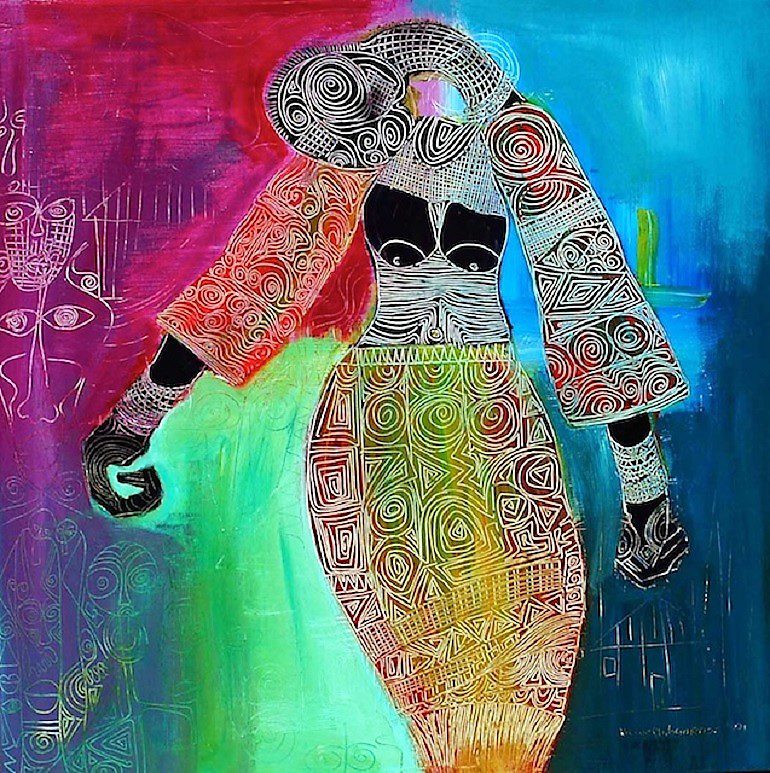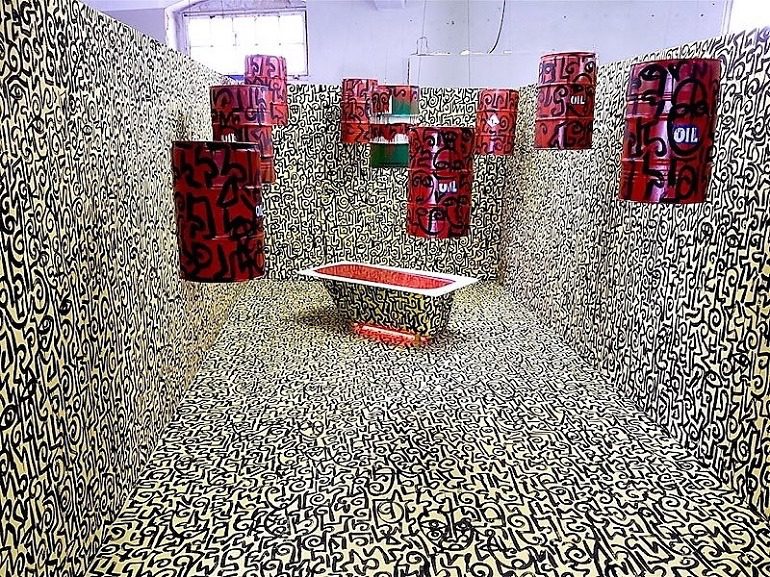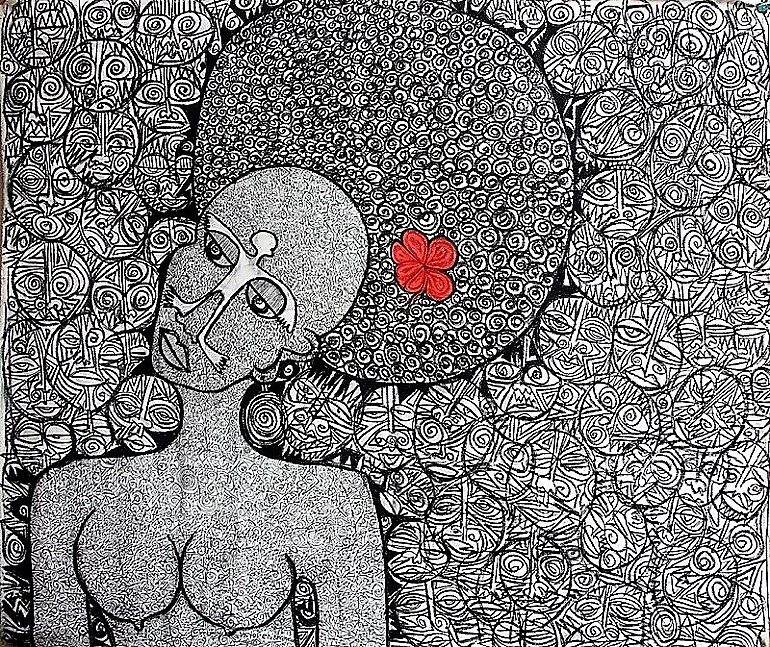ART NEWS
Child Of The Sky Performance Drawing by Victor Ehikhamenor. The artist will represent Nigeria at the 2017 Venice Biennale. Image: Victor Ehikhamenor
ARTCENTRON CELEBRATED /VISUAL ARTIST
The selection of Victor Ehikhamenor as one of the artists to represent Nigeria at the 2017 Venice Biennale is a reason to celebrate.
BY KAZAD

BALTIMORE, MARYLAND- The news that Victor Ehikhamenor was one of the artists to represent Nigeria at the 2017 Venice Biennale, resulted in elation amongst friends and fans. For them, this was a well-deserved opportunity for the young artist.
A self-taught artist, Victor Ehikhamenor has come a long way in the effort to actualizing his dream as an established artist. From drawing influences from famous artists when he started out, to creating a style that is now uniquely his own, Victor has relentlessly pursued his artistic dream.
ART NEWS | READ ALSO: Young Artists Will Benefit From Art Auction News and Trends
In his early works, Victor Ehikhamenor explored sgraffito, a technique that involved scratching and drawing on thick layers of paint. Works like Woman in Trance, The-complex Nature of a Forbidden Laughter, and Sucking Us Dry are important examples from this period.
Victor Ehikhamenor: A Searches for Artistic Identity
Born in Udomi-Uwessan, Edo State, Nigeria, Victor comes from a long line of artists and artisans. His grandmother was a cloth weaver while his uncle was a photographer. Victor’s maternal grandmother was also a blacksmith and his mother, a local artist. Evidently, Victor inherited their artistic genes.
Ehikhamenor’s search for an artistic identity took hard work and many twists and turns. Before arriving at his present style, he experimented with different media, styles, and flirted with various artistic traditions. His recent works are a confluence of lines, drawings, and motifs borrowed from his cultural background and other traditions. These motifs, usually found on fabric and community shrine walls, are a major source of inspiration for Victor’s paintings and installation art.
In less than a decade, Victor Ehikhamenor has become one of the most innovative young artists in the global art arena. His works have been shown in galleries and museums across the globe. In 2016, Victor was one of 11 Nigerian artists that participated in the grand exhibition at Biennale Jogja. The exhibition also featured works by twenty-three Indonesian artists.
The Wealth of Nations: Remembering the Ogoni Nine

Ehikhamenor’s entry to the Biennale Jogja was an installation titled The Wealth of Nations. The piece excavated a dark moment in Nigeria’s history. In 1995, the military dictator General Sani Abacha executed by hanging nine activists, who had been fighting against atrocities of oil companies in Ogoni, Nigeria. Known as the Ogoni Nine, the list included Saturday Dobee, Nordu Eawo, Daniel Gbooko, Paul Levera, Felix Nuate, Baribor Bera, Barinem Kiobel, John Kpuine, and author and playwright Ken Saro-Wiwa. The Wealth of Nations was the conversation piece at the important art event.
In addition to his career as an artist, Victor Ehikhamenor is also a brilliant writer and photographer. His writings have been published in magazines, academic journals, and newspapers such as New York Times and Washington Post. In 2003, Victor won the Association of Commonwealth Broadcasters Award with his short story titled The Supreme Command. Sordid Rituals, his debut poetry collection, was published in 2002.
Victor’s works and photographs have been used for editorials and book covers. His work can be found on covers of books by celebrated young Nigeria writers, including Chimamanda Adichie, Helon Habila, and Chika Unigwe. Some of his works have also graced international fashion parades.
Victor Ehikhamenor: Self-Taught Vs Academically Trained Artists
With all the success achieved over the years, one issue continues to be topmost in Victor’s heart: The hierarchical relationship between self-thought and academically trained artists. For Victor, the hierarchy is ludicrous. In the book, In A New Light: Conversations With Nine Nigerian Artists And Curators by Kazeem Adeleke, Victor Ehikhamenor opened up on this issue. He was candid about his views on prejudice against self-taught artists:
It is an age long debate. Every market or institution has its regulatory measure, an invisible fence to bar people. And it is no longer if you have formal training, it has to be some specific schools now. Some even want to know if I have a Yale MFA, which is one of the hottest schools to train. The sad thing about trained versus untrained is that those that did not go to a formal art school are the ones painting and producing works, while those that spent years training as artists now spend time as gatemen holding them back.
Ehikhamenor further contends:
At this stage in my career, such things don’t bother me, because I know I am not an illiterate. And to answer the second part of your question, I have encountered and I am still encountering such prejudices, but I handle such naivety very diplomatically. Finally, considering the history of African art, I think it is nonsensical for the African critic to say that the self-taught artist should not be respected or patronized.

